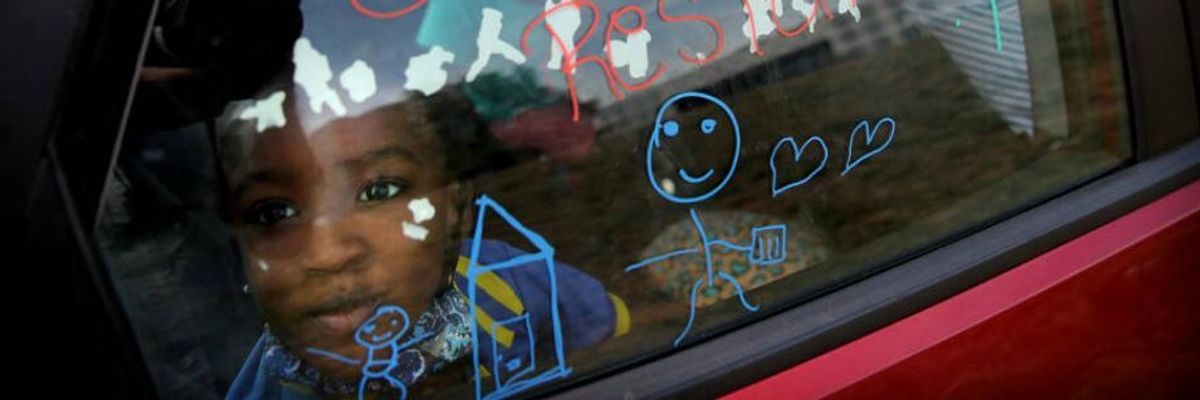I am among the millions of parents around the country (and more around the world) wondering whether to send our children back to school. The mere question evokes conflicting thoughts that usually end in confusion and exasperation. It's a big decision, one that most parents feel ill-equipped to make.
This novel coronavirus still stumps world-renowned epidemiologists. How can parents adequately ascertain what's best?
Let's be real: This novel coronavirus still stumps world-renowned epidemiologists. How can parents adequately ascertain what's best? My kids have tearfully intimated on more occasions than I care to acknowledge that they want to go back--to actually leave the house, learn from their teachers in person, spend time with friends beyond a laptop screen. My husband and I want that, too. If only it were that simple.
By August 30 at least 36 states had reported positive cases at colleges and universities, adding more than 8,700 cases to America's total. My heart sinks thinking of that now-infamous photo of Georgia high school students--a state where I once lived--maskless and crammed together in a narrow hallway, no social distancing in sight. Predictably, nine students and staff tested positive for Covid and the school temporarily closed. It's not quite a ringing endorsement for return.
And those were teenagers. Theoretically, they have the capacity to grasp the consequences of a public health crisis. My rambunctious 8- and 6-year-old sons? Not so much. Before the pandemic, we were still working on the whole "wash your hands" thing. I am not optimistic they could keep a mask on for an entire school day.
The story of little Kimora Lynum--"Kimmie" as her family affectionately called her--adds to my never-ending anxiety. The 9-year-old Florida girl loved to play video games and dance to YouTube and TikTok videos, just like my boys. After a sudden onset of a high fever and severe stomach pains in July, Kimmie was misdiagnosed with a urinary tract infection at a local hospital. She was sent home with Tylenol and antibiotics. Less than a week later, she died. A posthumous test determined Kimmie had Covid.
My heart aches for her mother, Mikasha Young-Holmes, who lost her only child. The preliminary evidence suggests younger children are less likely to become infected, but it is hard to stave off the fear of one of my sons becoming that rare case. Kimmie was African American, like my family and me. Statistically, we are at elevated risk.
But I admit I face yet another truth, as do many parents who privately admit it: I am tired. We want back our "B.C." lives, the ones from "before Covid-19." Having kids in school would certainly help. My family and I have done our best to stay upbeat and creative, but we can only do so many movie nights, paint parties and day trips confined in a car.
The lack of high-quality, affordable child care and related support systems must be factored into any decision about closing or reopening schools.
And I recognize the privilege that boredom and cabin fever are among our most pressing concerns. Millions of Americans are struggling with illness, loss of life, and loss of livelihoods. Many parents--especially low-wage service workers, disproportionately Black and brown--have been deemed "essential," forcing them to the front lines. Without schools open, where will their children go while they go to work? The lack of high-quality, affordable child care and related support systems must be factored into any decision about closing or reopening schools.
My kids' school district in Colorado reopened in August, about two weeks later than usual, and online learning will continue at least through mid-October. At least two K-12 schools in Colorado have already reported outbreaks (multiple infections linked to the same location or event), both involving staff. More cases were discovered at other schools, after students were tested preemptively. We have been warned that our in-person start date could be pushed back if cases continue to rise. Ultimately, I agree with this choice, even if it won't be easy. Safety must come first.
Consider, again, the state of Georgia. Gov. Brian Kemp pushed for his state and schools to reopen, yet the governor's mansion where he lives remains closed to public tours indefinitely, according to its website, "to ensure the health and safety of Georgia families."
Something tells me school districts should be doing the same.
This piece is a response to "What Does a "Safe Return" to School Look Like? Ask Teacher Unions." by Lois Weiner and Jackson Potter.
